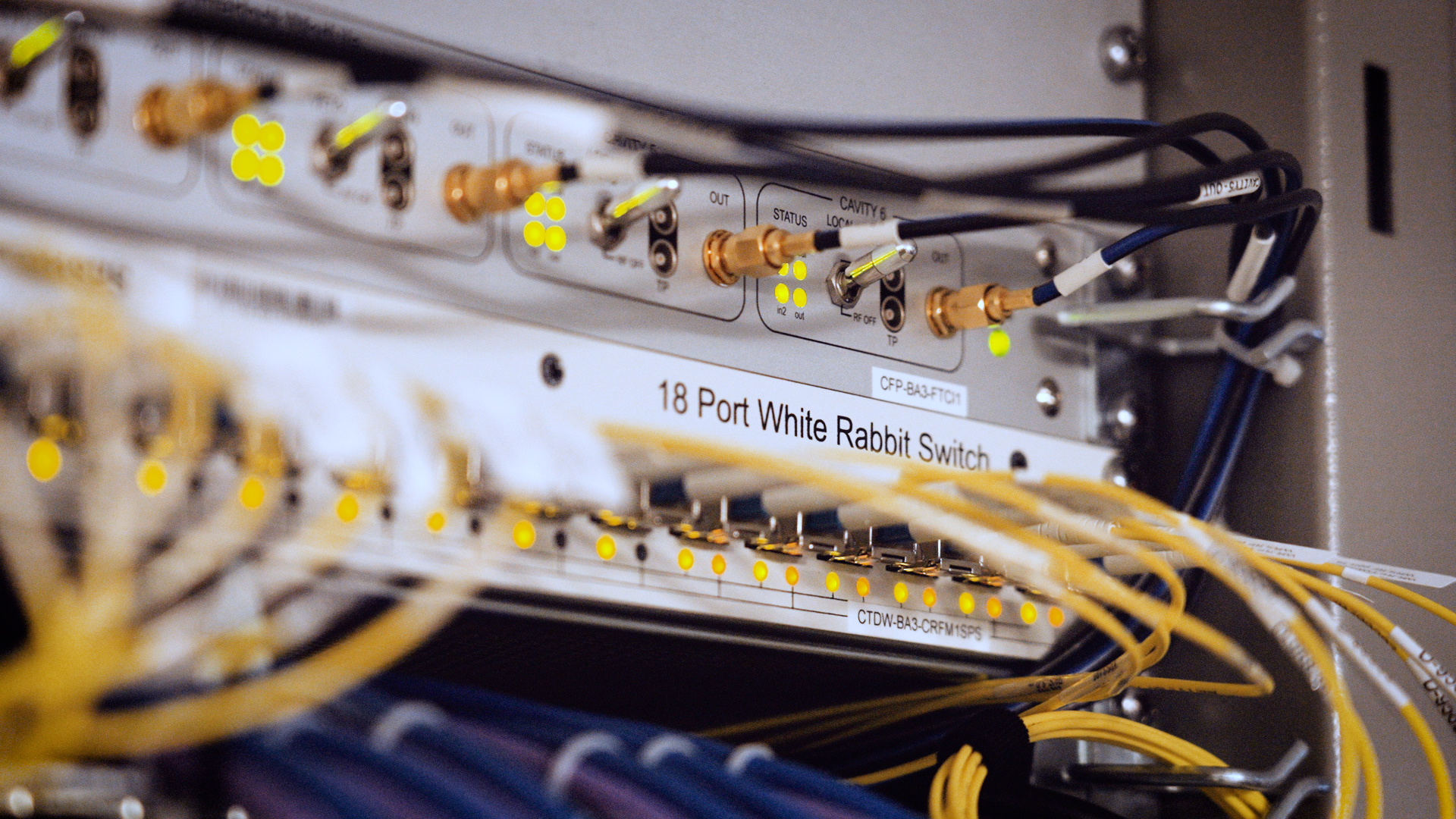
The White Rabbit switch, a key component of the CERN-born open-source timing technology. (Image: CERN)
A small yet innovative experiment is taking place at CERN. Its goal is to test how the CERN-born optical timing signal - normally used in the Laboratory's accelerators to synchronise devices with ultra-high precision - can best be sent through an optical fibre alongside a single-photon signal from a source of quantum-entangled photons. The results could pave the way for using this technique in quantum networks and quantum cryptography.
Research in quantum networks is growing rapidly worldwide. Future quantum networks could connect quantum computers and sensors, without losing any quantum information. They could also enable the secure exchange of information, opening up applications across many fields.
Unlike classical networks, where information is encoded in binary bits (0s and 1s), quantum networks rely on the unique properties of quantum bits, or "qubits", such as superposition (where a qubit can exist in multiple states simultaneously) and entanglement (where the state of one qubit influences the state of another no matter how far apart they are). These properties allow quantum networks to perform tasks that are impossible or inefficient for classical networks. Quantum networks can even be used to test fundamental physics concepts such as Bell inequalities and the structure of spacetime.
At the CERN Quantum Technology Initiative (QTI), scientists have recently set up a specialised laboratory to test how the CERN-born White Rabbit optical timing signal can best be transmitted together with entangled photons through an optical fibre. While similar experiments have been done previously by other research teams worldwide, this is the first time this technology, originally developed to synchronise accelerator devices, is being tested locally at CERN for this purpose. "The White Rabbit timing technology is the natural candidate for application in quantum communication as it provides sub-nanosecond accuracy and picoseconds precision in synchronisation, making it suitable for large distributed systems and quantum networks," says Annick Teepe, the scientist in charge of the CERN quantum network lab.
The same timing precision is required in quantum key distribution, a protocol that generates secure encryption keys for quantum cryptography. "High timing precision is critical for demonstrating the distribution of entangled photon pairs, which forms the basis of entanglement-based quantum key distribution," explains Annick. "Unlike other existing time synchronisation technologies, White Rabbit is open source and based on standards."
In the current experiment, the White Rabbit classical timing signal is combined with a quantum signal from a source of entangled photon pairs that was supplied in-kind to CERN by Qunnect. The set-up also uses a superconducting nanowire single-photon detector that was provided in-kind by Single Quantum.
"With our tests, we aim to contribute to the global effort around the synchronisation of quantum networks and to help establish White Rabbit as a standard technology for quantum communication, even in distributed and complex settings," says Amanda Díez Fernández, coordinator of partnerships for QTI.






